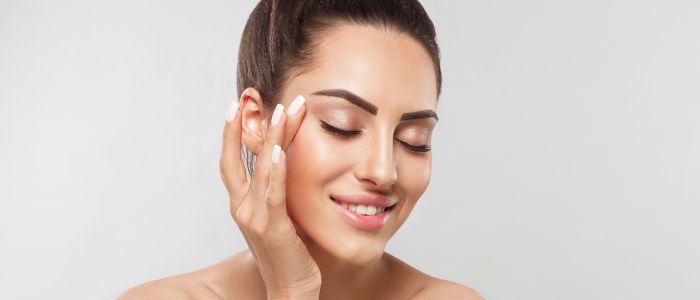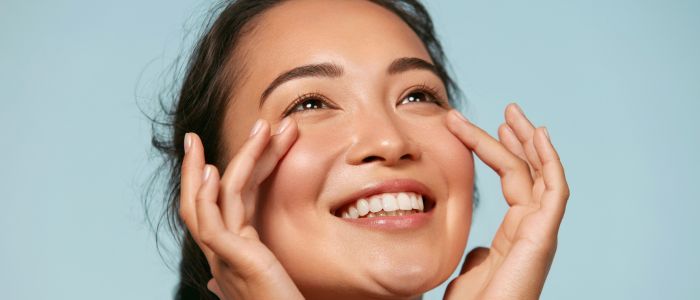
Table of Contents
- Options for Eyelid Surgery Scar Reduction
- The Basics of Eyelid Surgery Scars
- Early Post-Surgical Care
- Medications to Minimise Scarring
- Over-the-Counter Solutions
- Prescription Medications
- The Role of Silicone Gel Sheets and Scar Gels
- How Silicone Aids in Scar Healing
- Application Tips for Best Results
- Importance of Sun Protection for Healing Scars
- Choosing the Right Sunscreen
- Wearing Protective Eyewear
- Seeking Shade and Avoiding Peak Sun Hours
- Additional Scar Treatment Options
- Steroid Injections for Scar Minimisation
- Laser Therapy for Scar Reduction
- Microneedling and PRP Therapy
- FAQs about What Can Be Done to Reduce Eyelid Surgery Scars
Options for Eyelid Surgery Scar Reduction
Eyelid surgery is a procedure designed to improve the appearance of the eyelids. It can be performed on the upper lids, lower lids, or both. The goal might be to remove excess skin, eliminate bags under the eyes, or create a more defined eyelid crease. However, as with any surgical intervention, the process of making incisions can lead to scarring.
Scarring is a natural part of the healing process following any surgery. It occurs because the body repairs the skin and underlying tissues that have been incised or damaged during the procedure. While your surgeon makes an effort to place incisions along the natural folds of the eyelids to minimise visible scarring, the extent and visibility of scars can vary based on several factors. These include your skin type, the specific techniques used by your surgeon, and how well the post-operative care instructions are followed.
Understanding the nature of eyelid surgery scars is essential for setting realistic expectations. It’s important to note that while scars can be minimised, they may not disappear entirely. The appearance of scars can improve over time, becoming less noticeable. The initial redness and thickness gradually fade, but this process can take up to a year or more.
In this blog, Consultant Plastic Surgeon Anca Breahna will discuss the potential outcomes of eyelid surgery, including the appearance of scars and the strategies to minimise them.
The Basics of Eyelid Surgery Scars
Scars are an inevitable outcome of surgery, resulting from the body’s natural healing process. Post-eyelid surgery, scars manifest as the skin heals from incisions made to remove or reposition tissue. The characteristics of these scars can vary widely among patients, influenced by factors such as genetic predisposition, age, skin quality, and the body’s specific healing mechanisms.
There are primarily two types of abnormal scars that may develop after eyelid surgery: hypertrophic scars and keloid scars. Hypertrophic scars are raised, red, and confined to the area of the initial incision. They often improve on their own over time or with treatments. Keloid scars, more severe, extend beyond the initial wound site and may require more intensive treatment options for improvement. Fortunately, keloid formation in eyelid surgery is rare due to the skin’s thinness in this area.
The healing process for eyelid scars usually unfolds over several stages. Initially, scars may appear red, raised, and more noticeable. This phase can last for several weeks to months as the body works to repair the tissue. Over time, the scars generally become flatter, softer, and lighter in colour, blending more with the surrounding skin. This maturation process can take from several months to a year or more, depending on individual healing rates and adherence to post-operative care.
Early Post-Surgical Care
The initial days and weeks following eyelid surgery are a period that can significantly influence the healing process and the eventual appearance of scars. Early post-surgical care focuses on mitigating complications, reducing the risk of infection, and promoting optimal healing of the surgical sites. Adherence to Anca’s post-operative instructions is imperative during this phase.
Immediately after surgery, you may be instructed to apply cold compresses to the area around the eyes to reduce swelling and bruising. It’s important to use these compresses as directed, usually for the first 48 hours post-surgery, to help minimise tissue trauma and contribute to a smoother recovery.
Keeping the head elevated, even when sleeping, is another aspect of early care. Elevation helps to reduce swelling and drains fluids away from the surgical site, which can otherwise contribute to increased scar visibility and delayed healing. Patients are often advised to sleep with their head elevated on pillows for at least the first week after surgery.
Proper wound care is also essential. This may include gently cleaning the eyelid area with prescribed solutions, applying topical antibiotics to prevent infection, and avoiding rubbing or straining the eyes. It’s important to follow Anca’s instructions on how to care for your eyes meticulously to prevent any disturbances to the healing wounds.
In addition to these physical care techniques, early post-surgical care also involves managing discomfort and monitoring for signs of complications. Pain can be managed with over-the-counter or prescription medications as recommended by Anca. However, it’s vital to report any unusual symptoms, such as increased pain, vision changes, or signs of infection, to your surgeon immediately.
Medications to Minimise Scarring
In the aftermath of eyelid surgery, certain medications can play a role in minimising the appearance of scars. These range from over-the-counter options to prescription treatments, all aimed at supporting the healing process and improving the final aesthetic outcome. It’s important to only use these medications under the guidance of your surgeon to ensure they’re appropriate for your specific situation.
Over-the-Counter Solutions
One common recommendation is the use of silicone gel or sheets. These products are widely regarded for their ability to reduce scar formation. Silicone works by hydrating the scar tissue, which can help to soften and flatten the scar, making it less visible. Additionally, silicone gels or sheets can diminish redness and discomfort associated with healing scars. Patients are typically advised to start using these products once the wound has closed and to continue their use for several months for the best results.
Vitamin E is another popular recommendation, often touted for its skin-healing properties. However, its efficacy in scar reduction is debated among medical professionals. Some studies suggest it can help improve the appearance of scars, while others indicate it offers no significant benefits. Before applying vitamin E or any over-the-counter product, consult Anca to ensure it’s suitable for your skin type and healing stage.
Prescription Medications
For patients prone to more pronounced scarring, prescription treatments may be necessary. Topical steroids, for example, can be prescribed to reduce inflammation and prevent the formation of hypertrophic scars or keloids. These medications must be used judiciously, as prolonged use can thin the skin and lead to other side effects.
In some cases, retinoid creams may be recommended. Retinoids can help speed up cell turnover, potentially reducing the appearance of scars over time. However, they can also make the skin more sensitive to sunlight, so using sunscreen and following Anca’s instructions on their use is essential.
When using any medication to minimise scarring, it’s essential to have clear communication with your surgeon. Anca can provide guidance on what products are safe to use and when to start using them based on your healing progress. Additionally, your surgeon can adjust your treatment plan if she notices any adverse reactions or if the scar isn’t improving as expected.
The Role of Silicone Gel Sheets and Scar Gels
Silicone gel sheets and scar gels are among the most recommended interventions for managing and minimising scars following eyelid surgery. Their effectiveness is attributed to the creation of a protective barrier over the healing scar, which maintains hydration and enables the scar to mature in a less conspicuous manner. The consistent use of these silicone-based products can lead to scars that are softer, flatter, and less visible.
How Silicone Aids in Scar Healing
Silicone works by hydrating the scar tissue, which is crucial because a moist environment is known to facilitate optimal scar healing. This hydration prevents the scar from becoming too hard or raised, making it blend more seamlessly with the surrounding skin. Moreover, silicone gel sheets and gels reduce the itching and discomfort often associated with the healing process, providing a soothing effect that can discourage scratching or picking at the scar.
Application Tips for Best Results
For those considering the use of silicone gel sheets or scar gels, there are several tips to ensure their effective application:
- Start Early: Begin using silicone products once the wound has fully closed and Anca gives the go-ahead. Early intervention can prevent the scar from becoming overly prominent.
- Consistent Use: For the best outcomes, apply silicone gel or sheets daily, following the product instructions. Consistent use over several months is often required to see significant improvements in scar appearance.
- Clean and Dry Application: Before applying silicone sheets or gel, ensure the skin is clean and completely dry. This will help the product adhere better and work more effectively.
- Proper Placement: When using silicone sheets, cut them to fit the size of the scar area precisely. If using gel, apply a thin layer over the scar. In both cases, make sure the product covers the entire scar.
- Follow Duration Recommendations: Typically, silicone products should be worn for 12-24 hours a day, depending on the specific product’s instructions. Adhering to these guidelines maximises the benefits.
- Monitor Skin Reaction: While silicone products are generally safe, monitoring your skin for any adverse reactions is important. If irritation or rash occurs, discontinue use and consult your surgeon.
Integrating silicone gel sheets or scar gels into your post-operative care regimen requires minimal effort but can significantly impact the healing and eventual appearance of eyelid surgery scars. It’s a non-invasive approach that, when combined with other care measures, can greatly enhance the aesthetic results of your surgery.
Importance of Sun Protection for Healing Scars
Exposure to ultraviolet (UV) rays can cause scars to darken and become more prominent, potentially compromising the cosmetic outcome of the procedure. Therefore, implementing effective sun protection strategies is essential to ensure scars heal with a less noticeable appearance:
Choosing the Right Sunscreen
Look for a broad-spectrum sunscreen that provides protection against both UVA and UVB rays. A product with an SPF (Sun Protection Factor) of 30 or higher is recommended. For the delicate skin around the eyes and on the eyelids, consider sunscreens formulated for sensitive skin to avoid irritation.
It’s also advisable to choose a sunscreen that is water-resistant, especially if you’re likely to sweat or come into contact with water. Reapply sunscreen every two hours, or more frequently if swimming or sweating, to maintain effective protection.
Wearing Protective Eyewear
In addition to sunscreen, wearing sunglasses that offer UV protection can shield the eyes and the surrounding skin, including the healing scars, from sun exposure. Choose sunglasses with large lenses or a wraparound design to cover as much skin as possible. Ensure the sunglasses block 99% to 100% of UVA and UVB rays for maximum protection.
Seeking Shade and Avoiding Peak Sun Hours
Another key strategy in protecting healing scars from the sun is to seek shade whenever possible, especially during the peak sun intensity hours between 10 a.m. and 4 p.m. When outdoor activities are unavoidable, wearing a wide-brimmed hat can provide additional protection for the face and eyes.
Additional Scar Treatment Options
For patients seeking more definitive improvements in the appearance of eyelid surgery scars, professional treatment options offer advanced solutions. These treatments, which should be considered after the initial healing phase and upon consultation with Anca, can significantly enhance the appearance of scars, making them less noticeable:
Steroid Injections for Scar Minimisation
Steroid injections, specifically corticosteroids, are commonly used to treat hypertrophic scars and keloids that may develop after eyelid surgery. These injections help reduce scar tissue’s thickness by breaking down collagen fibres, resulting in a flatter scar. Patients typically receive a series of injections at intervals over several months. While effective for many, it’s important to discuss the potential side effects, such as skin thinning or changes in skin colour at the injection site, with your healthcare provider.
Laser Therapy for Scar Reduction
Laser therapy has become increasingly popular for improving the appearance of surgical scars, including those from eyelid surgery. Various types of lasers can be used, depending on the scar’s characteristics. For example, pulsed dye lasers are effective for reducing redness and improving scar texture, while fractional lasers can help blend the scar more seamlessly with the surrounding skin by stimulating collagen production. Laser treatments require multiple sessions to achieve optimal results, and the process should be overseen by a plastic surgeon experienced in laser therapy.
Microneedling and PRP Therapy
Microneedling involves using a device with fine needles to create micro-injuries in the skin, stimulating the body’s natural healing process and encouraging collagen production. When combined with platelet-rich plasma (PRP) therapy, which involves injecting a concentration of the patient’s own platelets to promote healing, the effects on scar appearance can be enhanced. This combination can improve skin texture and reduce the visibility of scars over a series of treatments.
FAQs about What Can Be Done to Reduce Eyelid Surgery Scars

How long should I wait before considering scar reduction treatments after eyelid surgery?
It’s generally recommended to wait until the surgical wound has fully healed and the scar has stabilised before considering additional scar reduction treatments. This process can take anywhere from several months to a year, as scars continue to mature and improve in appearance during this time. Anca will provide personalised advice based on the specifics of your surgery and healing progress.
Can exercise impact the healing of eyelid surgery scars?
Moderate exercise can be beneficial to overall health and may support the healing process by improving blood circulation. However, it’s important to avoid strenuous activities or exercises that increase blood pressure to the face in the initial weeks following surgery, as this can exacerbate swelling and potentially worsen scar appearance.
Are there any specific vitamins or supplements that can aid in scar healing after eyelid surgery?
While a balanced diet is key to supporting the body’s healing process, some specific nutrients have been identified as particularly beneficial for skin healing and scar reduction. These include vitamin C, known for its role in collagen production, and zinc, which supports tissue repair and healing. Omega-3 fatty acids, found in fish oil supplements, may also have anti-inflammatory effects that can aid in the healing process.
How can I tell if my eyelid surgery scar is healing properly?
Normal signs of healing include the gradual softening, flattening, and lightening of the scar over time. While some redness, swelling, and discomfort are common in the early stages, these should diminish as the scar heals. Any signs of infection, such as increased redness, warmth, swelling, or discharge, should be reported to your surgeon immediately. Regular follow-up appointments are crucial to monitor the healing process and address any concerns.
Is it possible for eyelid surgery scars to completely disappear?
While it’s unlikely for any surgical scar to disappear entirely, proper care and treatment can make eyelid surgery scars significantly less noticeable. Over time, and with appropriate interventions, scars typically fade to the point where they are not easily visible, especially since incisions are often made along the natural creases of the eyelids. The goal of scar management is to minimise the appearance of scars, blending them as much as possible with the surrounding skin.
Medical References about What Can Be Done to Reduce Eyelid Surgery Scars
- Scar formation after lower eyelid incision for reconstruction – PubMed: https://pubmed.ncbi.nlm.nih.gov/15349097/
- Management of Cosmetic Eyelid Surgery Complications – PubMed: https://pubmed.ncbi.nlm.nih.gov/19901407/
- Validated Outcome Measures and Postsurgical Scar Assessment Instruments in Eyelid Surgery: A Systematic Review – Research Gate: https://www.researchgate.net/publication/331631146_Validated_Outcome_Measures_and_Postsurgical_Scar_Assessment_Instruments_in_Eyelid_Surgery_A_Systematic_Review
- Blepharoplasty (Eyelid Surgery) – Cleveland Clinic: https://my.clevelandclinic.org/health/treatments/8409-eyelid-surgery-blepharoplasty
- Eyelid Reduction Surgery – Australian Society of Plastic Surgeon: https://plasticsurgery.org.au/procedure/eyelid-reduction-surgery/
Further Reading about Eyelid Surgery
- Read more about What Are Hooded Eyelids?
- Read more about Solutions for Saggy Eyelids
- Read more about When Can I Exercise after Eyelid Surgery
- Read more about Options for Eye Bag Surgery
- Read more about Blepharoplasty / Eyelid Lift Surgery
- Read more about Recovery after Eyelid Surgery








